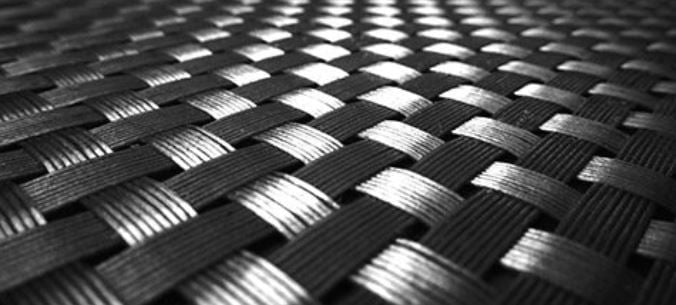The history of human innovation is marked by the advent of new materials—ceramics, steel, plastics—and we are now on the brink of another transformative era: the age of composites. Composites, such as the carbon-fiber variants used in wind turbines, race cars, and the Boeing 787, offer a remarkable blend of lightness and strength, making them highly desirable for various applications. However, the labor-intensive nature of their production has historically limited their widespread adoption. This is poised to change with the advent of new manufacturing techniques that promise to make composites more affordable and accessible, heralding profound and exciting developments across multiple industries.
The Dawn of Composites in Modern Manufacturing
Modern composites trace their origins to the early 20th century with the advent of Bakelite, followed by a steady stream of innovations. The late 1990s and early 2000s saw significant advancements as automated processes for creating large composite structures, such as airplane bodies and windmill blades, matured. Recently, a number of startups have developed processes to produce smaller composite objects quickly and inexpensively. Companies like Arris Composites in Berkeley, 9T Labs in Zurich, and Orbital Composites in Silicon Valley are leading the charge, aiming to shift significant portions of manufacturing from steel and plastic to composites.
Revolutionary Potential of Composites
Composites stand out due to their exceptional properties. They can match the performance of high-strength metals at a fraction of the weight, which is crucial for applications ranging from aviation to consumer electronics. For instance, composites enable the construction of fuel-efficient modern jetliners and are indispensable in the wind-power industry, which relies on enormous turbine blades made from these materials.
Boeing’s 787, a pioneer in composite technology, exemplifies the potential of these materials. Nearly every visible surface of the 787 is made of a carbon-fiber composite, showcasing the advantages of composites in reducing weight while maintaining strength. However, the challenge remains to mass-produce smaller composite parts, such as the bolts and brackets typically made from metals.
Breakthroughs in Manufacturing Techniques
The journey to mainstreaming composites involves an evolutionary rather than revolutionary process. Today, ultralight, ultrastrong parts made by companies like Arris and 9T Labs are already available in consumer products, such as Brooks running shoes and luxury watches. The future, however, holds even more promise. Arris’s technology is being tested by Airbus to replace metal brackets inside planes, while 9T Labs aims to introduce bicycles made with their parts by the end of the year. Orbital Composites, meanwhile, is developing composites-manufacturing processes for the U.S. military, targeting applications in satellites, rockets, drones, and hypersonic aircraft.
The key to these advancements lies in automating the manufacturing process. Traditional methods of making composite parts are labor-intensive, requiring skilled manual labor. Companies like Arris and 9T Labs are working to eliminate this intensive labor, aiming for automation levels comparable to those in metal and plastic manufacturing. Arris shapes carbon fibers using a wire-bending-like process, then embeds them in resin and molds them under heat and pressure. 9T Labs employs a similar method, starting with additive manufacturing to lay down narrow carbon-fiber strips before molding.
Diverse Approaches to Composites Manufacturing
The variety of approaches in composites manufacturing underscores the industry’s fragmented nature. Arris, 9T Labs, and Orbital Composites each employ unique methods, highlighting the multiple pathways to success in this burgeoning field. Orbital Composites, for example, uses industrial robots with custom print heads to 3-D print carbon-fiber shapes, supported by removable molds. This diversity indicates a robust potential for innovation and growth in composites manufacturing.
Composites in Consumer and Military Applications
Composites might seem futuristic, but they echo ancient technologies. Wood, the original composite material, shares many characteristics with modern composites: light, strong, and able to withstand both compression and tension. However, like wood, composites can fail along their layers, presenting challenges in durability.
Addressing these challenges is crucial for applications in aerospace and beyond. Jeremy Koh, head of advanced-materials solutions at ST Engineering, notes that composite parts can break down due to fatigue over time. His company is testing composite replacements for titanium bolts in airplanes, finding that while they perform well initially, rigorous testing is needed to ensure long-term reliability.
Despite these hurdles, composites offer significant advantages. They are lighter, easier to produce, and potentially cheaper than traditional materials. For instance, composite bolts bypass geopolitical supply chain issues associated with titanium, largely sourced from Russia and China.
Future Prospects and Consumer Acceptance
While aerospace applications of composites require extensive testing, consumer products can adopt these innovations more swiftly. Arris is exploring the use of composites in virtual reality headsets, addressing weight issues that hinder adoption. Further down the line, we may see smartphones and automobiles made from composites, although consumer perceptions of quality materials may pose a barrier. People often associate metal with durability, even if composites are superior in strength and weight.
In conclusion, the advent of advanced composites marks a pivotal moment in materials science. The new manufacturing techniques making composites more accessible could revolutionize industries ranging from aerospace to consumer electronics, promising lighter, stronger, and more efficient alternatives to traditional materials. As these technologies mature and gain acceptance, they will undoubtedly reshape our world, much like the materials innovations of the past.
Summary Table of Key Learning Points
| Key Learning Points |
|---|
| The history and evolution of composite materials. |
| Advantages of composites: lighter weight, high strength. |
| Limitations due to labor-intensive manufacturing. |
| Innovations in manufacturing processes for composites. |
| Diverse applications: aerospace, consumer products. |
| Challenges in durability and consumer acceptance. |
| Future prospects for composites in various industries. |

Sunil Garnayak is an expert in Indian news with extensive knowledge of the nation’s political, social, and economic landscape and international relations. With years of experience in journalism, Sunil delivers in-depth analysis and accurate reporting that keeps readers informed about the latest developments in India. His commitment to factual accuracy and nuanced storytelling ensures that his articles provide valuable insights into the country’s most pressing issues.



